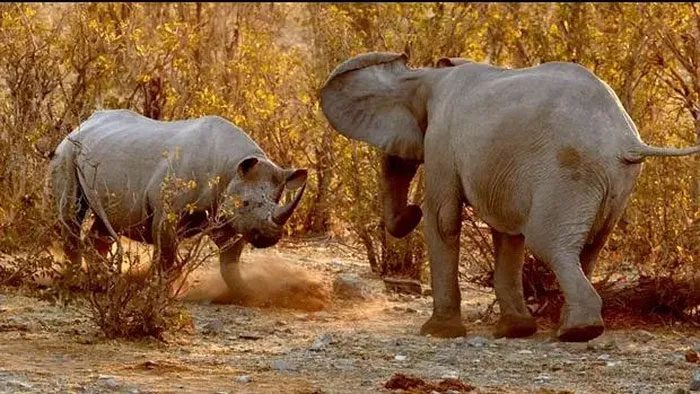Rising temperatures have caused glaciers in the Rocky Mountains to melt, revealing new resources that many species are eager to monopolize.
At research sites along the 2,400 km stretch of the Rocky Mountains in the United States, scientists are observing a battle between mountain goats and Bighorn sheep. Both species are competing for mineral deposits nestled among the rocks at elevations of up to 4,300 meters, resources newly exposed due to the gradual disappearance of glaciers in the area.
These competitions have not been previously documented in detail, indicating that two of the largest native mammals in the U.S. are engaged in a struggle that may stem from the impacts of the climate crisis. According to researchers, such interspecies conflict “may reflect climate degradation along with the changing nature of desirable resources.”

A mountain goat (far right) approaches three Bighorn sheep in a snowy region of Glacier National Park. (Photo: Forest P Hayes)
Joel Berger, the lead author of the study and a senior scientist at the Wildlife Conservation Society and Colorado State University, expressed his “astonishment” at the number of skirmishes between the two hoofed species. Among the observed battles, goats emerged victorious 98% of the time, a clear testament to their dominance in rocky terrains.
“They are the rams of the mountains,” Berger stated. “They have horns like swords, and their personalities are bolder and more aggressive. The goats have a very high win rate.”
Their rivals, the Bighorn sheep, are formidable opponents in their own right. This hoofed species is roughly the same size as mountain goats and also possesses a pair of long, curved horns. However, the goats are more fearsome warriors due to their decisiveness in battle and razor-sharp horns. Last year, a mountain goat killed a grizzly bear in Canada.
Generally, goats and sheep tend to avoid confrontation when they are near each other, but when conflict arises over mineral blocks, goats often drive the sheep away to enjoy the nutrient-rich resources alone.
Approximately 300 glaciers have vanished from the Rocky Mountains over the past century due to global warming, leading to the melting of snow and ice in the region. This fluctuation is disrupting ecosystems and raising concerns for communities of living organisms in the western United States, which rely on water sourced from rivers and streams fed by melting glaciers. However, the melting process is also exposing salt and potassium deposits, minerals valued by both goats and sheep. They need to lick these mineral deposits to obtain essential nutrients for their bodies.
These animals, adept at navigating rocky slopes, may now have to take greater risks to ascend higher mountains to access these resources as the ice melts away. This could lead to more competitive interactions, although it remains unclear whether the frequency of conflicts is increasing, as no previous investigations have been conducted.

Rhinoceros and elephant have clashed over water supply. (Photo: Andrew Forsyth).
“Not long ago, these areas were covered in ice and snow,” Berger noted. “Direct conflict is not something either of these species desires, but this is what is happening.”
According to this researcher, climate change driven by global warming is increasing the risk of conflict in other parts of the world, among creatures such as rhinoceroses and elephants, as they strive to access dwindling water supplies.
“Whether human or animal, climate change is reshaping all of our futures,” Berger added.


















































